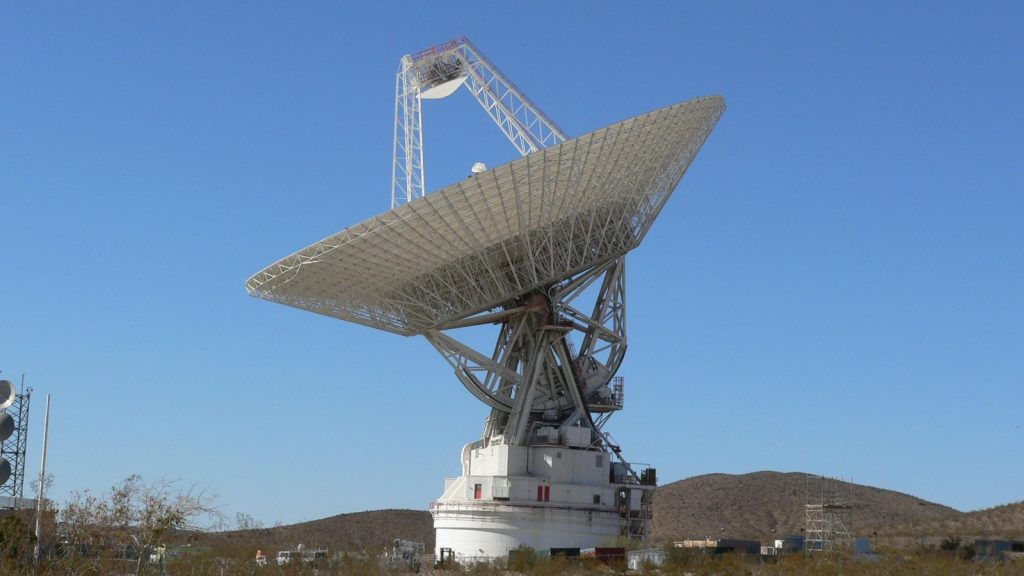Pictured is a NASA antenna in California
According to engineers and scientists involved in the project, the world’s largest antenna is now operational in central China, allowing long-distance communications with submarines as well as civilian applications.
News website South China Morning Post reported that the exact site of the facility has not been divulged, although it is thought to be located in the Dabie Mountains, a protected nature reserve that spans the provinces of Hubei, Anhui, and Henan.
The antenna, which is made out of a network of cables and pylons similar to those seen in regular power lines, would appear from space as a massive cross measuring more than 100 kilometers (62 miles) long and wide.
Receiving devices put 200 meters (700 feet) below the surface on the seafloor may receive up signals from the gigantic antenna 1,300 kilometers (800 miles) offshore, according to research published in the Chinese Journal of Ship Research last month.
The facility was designed to maintain underwater communications over a total range of 3,000km (1,9000 miles), according to project lead engineer Zha Ming and his colleagues from the Wuhan Maritime Communication Research Institute. This is enough to reach Guam, the largest US military base in the western Pacific Ocean.
The Chinese antenna is the world’s first large-scale extremely low frequency (ELF) facility open to non-military users that can create electromagnetic waves between 0.1 and 300 Hz, according to the study team. These waves can easily travel large distances both above and below the surface.
China and Russia also collaborated on a test to explore how far a signal may travel through the earth. The ping was received by a Russian station from a distance of 7,000 kilometers (4,400 miles), but the enhanced distance came at a cost: the link was one-way and could only convey encrypted text messages.

